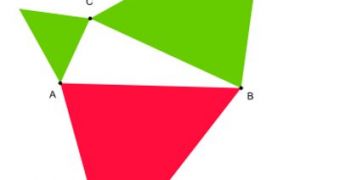Although it may seem like mathematical problems from the past are behind us, and our researchers deal with more abstract and complex calculations, this is not the case, as evidenced recently by a new computer effort by an international team of experts. Scientists from North and South America, from Europe, and Australia have used a large supercomputer to calculate possible solutions for a 1,000-year-old problem. The exercise requires which whole numbers can be the area of a right-angled triangle whose sides are whole numbers or fractions. This has been surprisingly hard to determine.
Among mathematicians, the area of such a triangle is called a “congruent number.” While smaller congruent numbers are fairly easy to find, and most of them have already been calculated, the larger ones are enormously difficult to calculate. In fact, the authors of the new investigation say that the numbers with which the computer operated were so long that, if they were to be written by hand, they would have covered a distance as large as the one between the Earth and the Moon, and back.
“Old problems like this may seem obscure, but they generate a lot of interesting and useful research as people develop new ways to attack them,” American Institute of Mathematics Director Brian Conrey says. The numbers were so large, that they could not fit into the main memories of available computers, so their hard drives had to be extensively used.
“The difficult part was developing a fast general library of computer code for doing these kinds of calculations. Once we had that, it didn't take long to write the specialized program needed for this particular computation,” Bill Hart, a member of the team behind the research, explains. He adds that the Persian mathematician al-Karaji (c.953 – c.1029) was the first one to formulate this problem. In the thousand of years that passed since then, not even all congruent numbers smaller than 1,000 have been resolved. The new investigation found 3,148,379,694 new congruent numbers up to a trillion.
The American Institute of Mathematics, a nonprofit organization, was founded in 1994 by Silicon Valley businessmen John Fry and Steve Sorenson, longtime supporters of mathematical research. AIM is one of the seven mathematics institutes in the US funded by the National Science Foundation (NSF). The mission of AIM is to expand the frontiers of mathematical knowledge through sponsoring focused research projects and workshops and encouraging collaboration among mathematicians at all levels. AIM currently 'resides' in Palo Alto, California.

 14 DAY TRIAL //
14 DAY TRIAL //